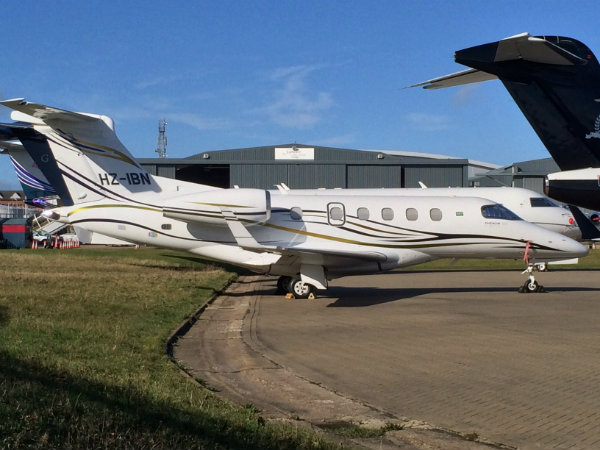The Embraer Phenom 300 that crashed at Blackbushe airport on 31 July 2015, killing the passengers and crew, was travelling too fast when it came in to land, the UK Air Accidents Investigation Branch (AAIB) has determined.
In its final report, issued on 8 December, the AAIB concludes that the privately operated light business jet (HX-IBN) and owned by Saudi Arabia’s Salem Aviation – “floated before touching down” significantly beyond the runway threshold and overran the runway end.
It then collided with an earth bank, before becoming airborne again and then landing on several parked cars.The pilot and passengers – members of Saudi Arabia's Bin Laden family – survived the impact, but died as a result of a fire, which began after the wing separated from the fuselage.

Aeroprints.com
Investigators found that the aircraft performed a steep descent which was “significantly above the normal profile” as it approached the airport, after manoeuvring out of the path of other aircraft.
The pilot attempted to deploy the Phenom’s speedbrakes, but they remained retracted as the flaps were deployed. As the aircraft flew over the start of runway 25, it was travelling at a speed of 151kt (280km/h) – 43kt above the target threshold speed, says the report.
“The excessive speed contributed to a touchdown 710m [2,330ft] beyond the threshold, with only 438m of paved surfaced remaining," says the report. “From touchdown at 134kt, it was no longer possible for the aircraft to stop within the remaining runway length.”
No technical defects were found on the 2010-built Phenom and no substances were found in the pilot’s body that would have inhibited his performance. The weather at Blackbushe was also fine at the time of the incident, with light and variable winds and visibility in excess of 5.3nm (10km), says the report.
The pilot held a Saudi Arabian air transport pilot’s licence and had flown into Blackbushe several times before. The AAIB says the pilot may have been aware of the twinjet’s high speed but believed the landing could be achieved, or he may not have appreciated how fast he was flying, perhaps because he was “fixated on landing”.
In addition, investigators suggest that the pilot’s “mental capacity could have become saturated” after being exposed to 66 audio warnings, instructions and messages during the 3min and 32s before reaching the start of the runway.
As a result of the crash, Salem’s Phenom 300s are now crewed by two pilots.
Source: Flight International



















